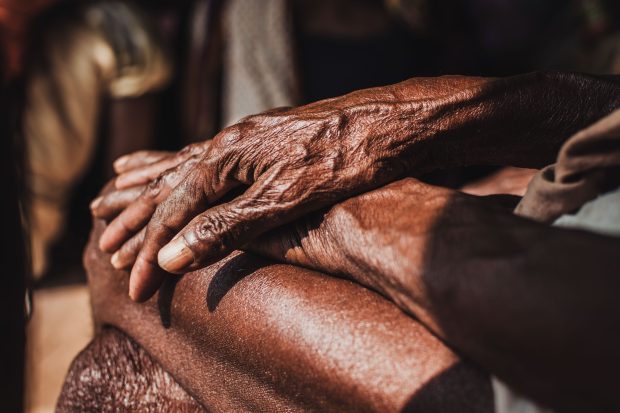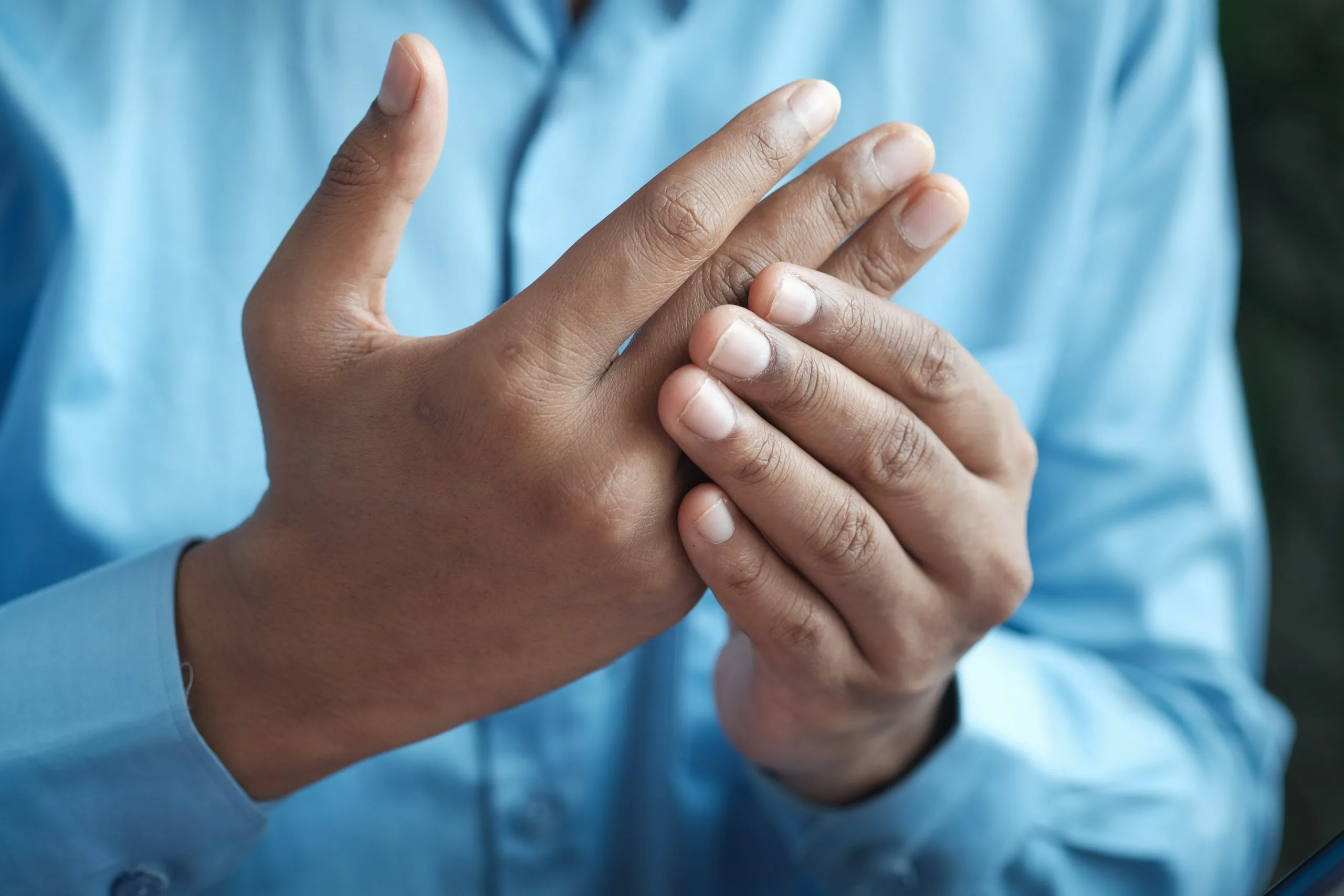Arthritis is a condition that has been associated with swollen joints and intense pain. While this sounds clear-cut and simple, this isn’t the case. Arthritis is extremely complex and doesn’t even pertain to one condition, but rather, a wide range of them.
Affecting about 58.5 million adults in the United States, arthritis isn’t a single disorder. In fact, it is an umbrella term for over 100 rheumatic diseases and conditions that affect the joints. These conditions tend to be encapsulated by intense pain and stiffness in and around one or more joints. It usually involves inflammation, swelling, and degeneration of the affected joints. The most common forms of arthritis are:
- Osteoarthritis
- Rheumatoid arthritis
- Gout
Today, we take a look at these common forms, to help you know the key differences and how to spot any signs of them, starting with the most common one; osteoarthritis.
1. Osteoarthritis
Also known as degenerative joint disease (DJD), this is the most common form of arthritis on a global scale. According to data obtained from the 2019 Global Burden of Disease study, it is a globally prevalent condition that is expected to increase continuously. It is stated that “due to population expansion, aging, and the epidemic of obesity, one would expect such a burden would increase in the near future.” According to the data, global osteoarthritis cases have risen to 527.81 million.
Osteoarthritis occurs when the protective cartilage that cushions the ends of the bones wears down over time. The condition mostly affects the joints in your knees, hips, hands, and spine. There are two main types, namely:
- Primary Osteoarthritis: The most common type, primarily affecting the fingers, spine, knees, and the big toe.
- Secondary Osteoarthritis: Occurs with pre-existing joint abnormalities, including injury or trauma.
Symptoms to look out for include:
- Joint pain and stiffness
- Tenderness on or near the affected joint
- Loss of flexibility in the joint
- Swelling is caused by tissue inflammation around the joint
- Bone spurs, which feel like hard lumps forming around the affected joint
2. Rheumatoid Arthritis
As a form of autoimmune inflammatory arthritis, this chronic disorder can affect more than just your joints. This condition has a worldwide distribution, affecting 1-2% of the entire population. Prevalence tends to increase with age and gender, affecting 5% of women globally aged 55 and above. Unlike the wear-and-tear damage that osteoarthritis causes, rheumatoid arthritis affects the lining of your joints, which causes painful swelling leading to bone erosion and joint deformity.
It is an autoimmune disorder. A healthy person’s immune system is able to fight off invaders such as bacteria and viruses. With rheumatoid arthritis, your immune system mistakes your body’s cells for foreign invaders, releasing inflammatory chemicals to attack the cells.
In this instance, your immune system attacks the synovium, the tissue lining around the joint. It produces fluid that helps the joint move smoothly. The synovium becomes inflamed, making the joint area feel painful and tender.
Symptoms to look out for include:
- Intense joint pain, swelling, and stiffness
- Fever
- Eye conditions, including dryness, pain, and inflammation
- Fatigue
- Gum inflammation
- Rheumatoid nodules, which are small lumps under the skin

Photo by Parij Photography on Pexels
3. Gout
Also known as metabolic arthritis, gout is a form of arthritis that arises due to an increased buildup of uric acid crystals. Normally, the body is able to get rid of any excess uric acid, but in the event that it doesn’t, it begins to accumulate in the joints. This buildup can be extremely painful, with its common target being the big toe.
While this is touted as the main cause, research suggests that other factors may trigger gout. These include:
- Damage from osteoarthritis
- White blood cells in the fluid inside joints
- Microbiome disruption
The most common form of inflammatory arthritis in the world, this condition affects over 41 million people. Symptoms to look out for include:
- Intense pain
- Swelling
- Stiffness
- Skin discoloration and redness
- Joint tenderness
Different Forms Have Different Causes
With a wide variation in the forms of arthritis, causes tend to differ. For instance, most forms of arthritis are believed to be caused by a fault in the immune system. This fault causes the body to attack its own tissue in the joints. This tends to be inherited genetically. On the other hand, the cause of the other types is unknown. What experts have been able to point out, though, are the risk factors we should be on the lookout for that can not only cause but also worsen arthritis.
Risk Factors
Some behaviors and characteristics, known as risk factors, have the ability to increase your likelihood of developing some forms of arthritis or worsening it. A few of these can be changed or adjusted, whilst others are non-modifiable.
Modifiable risk factors include:
- Being overweight or obese: Those who are overweight or obese are more likely to develop knee osteoarthritis. Since excess weight places extra stress on your joints, specifically weight-bearing joints like the knees or hips, having this weight can worsen the condition.
- Smoking: Studies have shown that smoking not only increases your risk of developing rheumatoid arthritis, but it can also worsen it. Smoking also makes staying physically active a difficulty, and it is important to note that exercise is important for managing rheumatoid arthritis, along with other forms of the condition.
- Joint injury and stress: Joint injury or overuse such as constantly bending your knee or repetitive stress, can damage a joint, thus contributing to the development of osteoarthritis in it.
Non-modifiable risk factors include:
- Age: Your risk for most types of arthritis increases as you get older
- Gender: Most types of arthritis are seen most commonly in women, especially osteoarthritis and rheumatoid arthritis. However, gout is more common in men. This is a gap that experts are still trying to figure out
- Genetics: People born with a gene known as the HLA (human leukocyte antigen) class II genotype are more likely to develop certain types of arthritis. Research shows that these genes can worsen your arthritis too.
General Arthritis Symptoms
While the symptoms may differ based on the form affecting you, the general symptoms which appear in nearly every case include:
- Pain in joints, ankles, fingers, spine, and muscles. This pain can either be intermittent or sharp
- A decreased range of muscular motion, manifesting as walking difficulties and muscle weakness
- Stiff, tender, and swelling joints
- Fatigue
- Bumps forming on fingers, or bony outgrowth in fingers and toes
Getting A Diagnosis
One of the most dangerous things you can do with your health is play the assumption game. If you experience any of these symptoms, you are advised to visit your doctor to conduct a test. There are a wide variety of tests that can determine whether you have arthritis or not. These include the following blood tests:
- Antinuclear antibody (ANA) Test: Checks your blood antibody levels
- Complete Blood Count (CBC): This checks if your white and red blood cells and platelet levels are normal.
- Arthrocentesis: A small sample of synovial fluid is taken from your joint and tested for bacteria, crystals, and viruses
Other methods include X-rays, urine tests, skin biopsies, and muscle biology.
No Cure, But A Variety Of Treatments
While there is no available cure for arthritis, treatment is an option. Treatment depends on the symptoms you are experiencing, the type of arthritis affecting you, your age, and your general health. Short-term treatment options include:
Short-term treatments include:
- Medications: Pain relievers such as acetaminophen, aspirin, ibuprofen, and other nonsteroidal anti-inflammatory medications.
- Heat and cold: Pain may be eased by using moist heat (warm bath or shower) or dry heat (heating pad) on the joint. Swelling may be eased with cold (ice pack wrapped in a towel) on the joint.
- Massage: Massaging painful muscles can increase blood flow to the muscle.
- Acupuncture: Thin needles that physicians insert at specific points in the body can stimulate the release of natural, pain-relieving chemicals made by the nervous system.
Long-term treatments include:
- Disease-modifying antirheumatic drugs (DMARDs): These prescription drugs slow down the disease and treat any immune system problems linked to the disease.
- Corticosteroids: This medication reduces inflammation and swelling, and come in pill form or as an injection.
- Hyaluronic acid therapy: This joint fluid appears to break down in people with osteoarthritis. It can be injected into a joint, such as a knee, to help relieve symptoms.
A Truly Diverse Condition
Arthritis is one of the most diverse conditions out there, with over 100 different forms, that are all different in their general build, symptoms, and treatments. If you’re experiencing any of the symptoms above, you should prioritize getting one of the tests above.
A doctor’s visit will help you identify exactly what is affecting you and find the best way to treat it. Treating something with the wrong intervention could lead to serious adverse side effects, further emphasizing that knowledge is power. Also, look out for these symptoms in your loved ones, as your attentiveness could potentially help them live a pain-free, fulfilled life.





![women [longevity live]](https://longevitylive.com/wp-content/uploads/2020/01/photo-of-women-walking-down-the-street-1116984-100x100.jpg)









